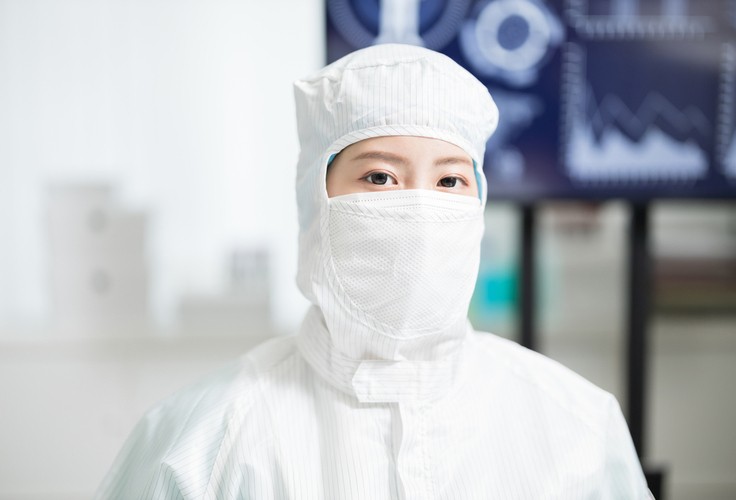
Biotechnology is one of the most innovative areas in science today, focusing on all areas of life sciences: medicine, the environment, agriculture, the animal world, and more. These areas of biotechnology share several common threads: They could improve our quality of life and the world we live in, and they all require unique, specific, stringent cleanroom protocols in their research, testing, and scientific manufacturing processes.
While all cleanrooms require a careful degree of control over their internal environment and all are intended to protect lab work, test samples, and personnel, the nature of biotechnology demands adherence to a higher level of standards. Without these requirements, the quality of lab work may be at risk, workers may encounter safety issues, and contamination of critical biological samples may occur. Here, we will examine the importance of the cleanroom for biotechnology and look at some of the key differences in a biotech cleanroom.
Cleanrooms for Biotechnology
Cleanrooms of any type are intended to provide a highly controlled and regulated environment in order to minimize the risk of contamination of laboratory work. They also help control environmental variables and fluctuations that may affect the outcome of tests. Cleanrooms achieve these objectives through airflow control, air filtration, temperature and humidity control, and stringent personnel protocols.
Depending upon the requirements of the application at hand, cleanrooms fall into one of several categories, each with differing requirements as to the acceptable level of particulate in the air. The most common categorization method uses Classes numbered from 9 to 1, with 1 being the most stringent and 9 being the least. In addition, all cleanrooms of any type must comply with ISO 14644-1 (which defines cleanroom levels).
Cleanrooms are used in a broad range of applications, including electronics manufacturing, aerospace manufacturing, and, of course, biotech applications. Below, we will look at some of the specific requirements that apply to biotechnology cleanrooms and how they differ from other types of cleanrooms.
- Must meet ISO Class 5 or “cleaner”: While most cleanrooms need only comply with ISO 14644-1 Class 8 or Class 7, biotechnology cleanrooms must meet the far more stringent Class 5 or better. Class 5 cleanrooms require a high rate of air changeover — typically 40 to 80 feet per minute — in order to maintain particulate levels below 3,520 particles of 5 micrometers or larger. These exacting requirements are necessary to ensure that biological testing and working materials maintain acceptable, non-material levels of particles.
- Hardwall construction: Most cleanrooms may be constructed in a hardwall (rigid, seamless panels) or softwall (cloth or fabric walls) configuration. In the biotech sector, however, hardwall construction is generally a requirement in order to provide the strongest safeguard against external contamination. Hardwall construction is also easier to clean and keep clean, is non-corrosive, and does not retain or shed particulate matter. Hardwall construction applies to walls, floors, and ceilings in the cleanroom.
- ISO 14698 compliance: Beyond the ISO 14644-1 class designations, biotechnology cleanrooms must usually comply with ISO 14698, which provides procedures for biocontamination control. All cleanroom personnel must understand and comply with these principles and practices in order to maintain the integrity and efficiency of the cleanroom work; to protect their safety as well as the safety of those outside the cleanroom; and to maintain regulatory compliance.
- Temperature, humidity, and atmospheric pressure control: In general usage, cleanroom standards typically apply to particulate levels in the ambient cleanroom environment. In biotech settings, however, cleanrooms must also carefully control temperature, humidity, and atmospheric pressure levels in order to maintain consistency and reliability in test results, preserve samples, and reduce the possibility of unintended reactions with biological matter. These requirements are typically met through industrial-quality HVAC and pressurization equipment.
- Class specifications for animal supply facilities: Animal supply facilities represent a unique area of the biotech field and maintain a supplemental classification system ranging from Class 1 to Class 4. These classes indicate the risk to humans and the environment and must be carefully understood and complied with in any animal supply testing and manufacturing cleanroom setting. Failure to understand these specifications can lead to fines, safety risks, reputational damage, facility shutdown, and other negative consequences.
- Filtration and airflow requirements: General cleanrooms achieve their “clean” levels through a combination of airflow and filtration, in varying levels depending upon the cleanroom Class designation required. Biotechnology applications require certain standards and methods in these areas, including laminar airflow and multi-stage HEPA filtration. These methods ensure close control and regulation of particulate matter, facilitating the ISO Class requirements of the cleanroom.
These qualifications represent some of the most important ways in which biotechnology cleanrooms must meet specialized, unique standards beyond those of standard cleanrooms. The importance of the work done in these settings makes the extra effort for cleanroom testing and compliance more than worth the investment.

